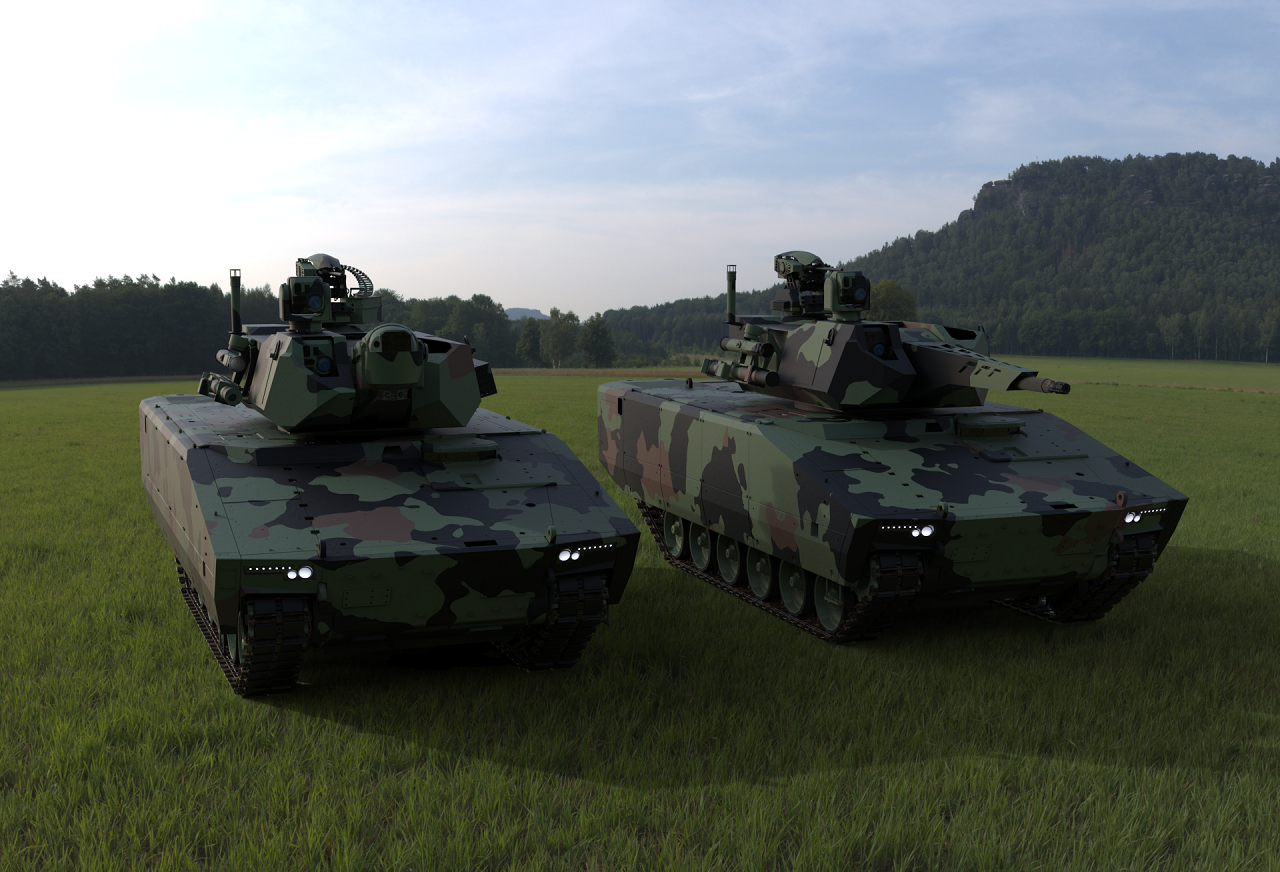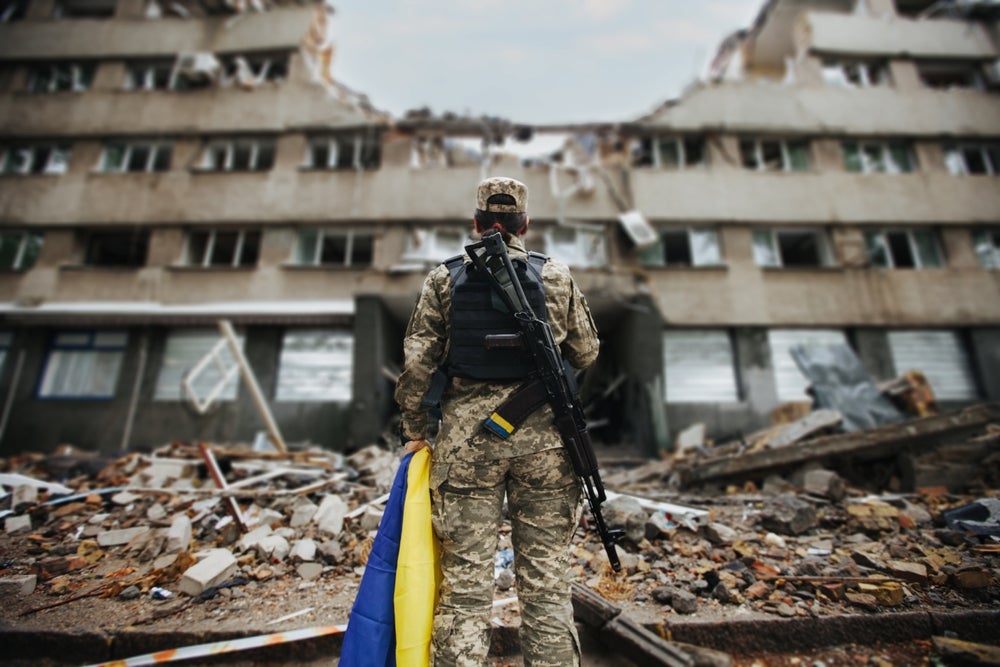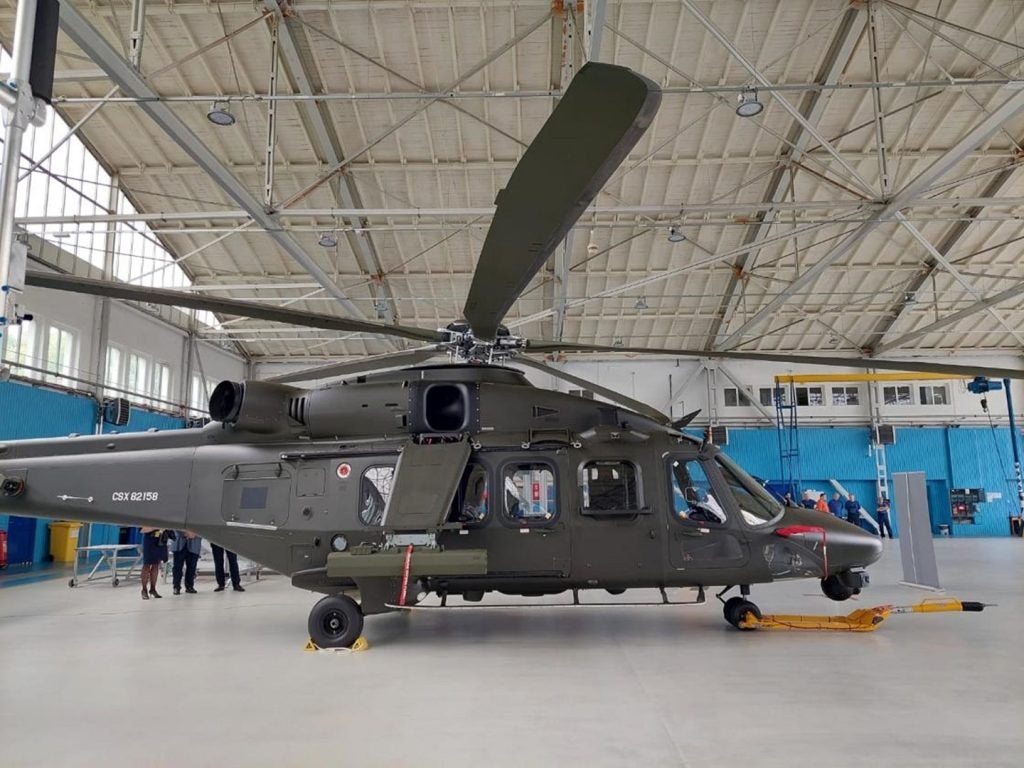
In June 2018, the US Army announced a modernisation plan and launched the Next-Generation Combat Vehicle (NGCV) programme to replace nearly 3,800 M-2 Bradley infantry fighting vehicles. In October that year, the army’s decision-making board redesignated the programme as the Optionally Manned Fighting Vehicle (OMFV) programme and decided to increase the number of vehicle programmes added to the NGCV.
American Rheinmetall Vehicles (ARV) has formed a team to execute Phase 2 the project’s requirements maturation effort using digital engineering and model-based system engineering tools. The group, Team Lynx, is made up of ARV, Raytheon Technologies, L3Harris Technologies, Textron Systems and Allison Transmissions.
Michigan-based director for business development strategy for ARV Mike Milner tells Global Defence Technology: “The Bradley IFV has been in the field now for close to 40 years and it has served very admirably. It’s not being replaced because it’s a poor vehicle, but it’s reached its age and maturity limits where it cannot be modernised any longer.”
Milner adds: “The new vehicle replacing the Bradley can continue to grow into the future and maintain overmatch against our near-peer adversaries and for the next 30-40 years.”
Because of the importance of replacing an obsolete vehicle, the previous failed attempts and because the OMFV is intended to serve a vital part in the US Army’s Armoured Brigade Combat Teams (ABCT), the programme has received a lot of attention.
The contract awarded to the five companies is worth approximately a total of $300m, with Rheinmetall receiving $54m. In this phase, the contractors will simultaneously develop a digital model that is tested through physics- and operationally-based models to determine what capabilities add value to the project.
How well do you really know your competitors?
Access the most comprehensive Company Profiles on the market, powered by GlobalData. Save hours of research. Gain competitive edge.

Thank you!
Your download email will arrive shortly
Not ready to buy yet? Download a free sample
We are confident about the unique quality of our Company Profiles. However, we want you to make the most beneficial decision for your business, so we offer a free sample that you can download by submitting the below form
By GlobalData“The army will then run those models through the operational and use the outcomes to determine what requirements and capabilities provide the most bang for the buck,” says Milner.
Then the requirements are refined, updated, and sent back to the contractors where they can make further adjustments and updates. In the next step, the data is fed back to the physics- and operational modelling to determine whether the requirements increased capability. This process is carried out twice. The phase began at the end of July and is expected to be delivered within 15 months.
Of the various Rheinmetall Lynx IFV models, the OMFV uses the K41 Australia as the point of departure for the OMFV’s design.
Milner says: “The Lynx itself was not based on any one country’s set of requirements, but it’s what Rheinmetall saw as the threats the armies would face in the future near-peer conflicts around the world. This variant’s raw form iteration meets many of the US Army’s characteristics with no modification and changes necessary.”
The Lynx vehicle’s architecture is already in use in the field by the UK and Australia in the Boxer multirole armoured vehicle.
“One of the unique requirements of the US Army was a two-person crew with those two persons located below the hull line, which generated a requirement for a remote turret concept which is not a traditional Lynx K41 attribute,” Milner says.
That concept was developed earlier, and Team Lynx is currently working on the first iteration of that turret. They will make it modular and interchangeable to support a variety of different weapon systems depending on the lethality required for a mission.
After four decades of service, the M-2 Bradley has reached a point where it lacks the size, weight power and cooling capabilities required for a vehicle to adapt and adopt future capabilities as new technologies proliferate the military. Milner says ensuring that the ability to grow over time is the most important aspect of the OMFV project.
“No matter who provides it, the OMFV will provide a better vehicle than the Bradley. In terms of its ability to adapt into the future with a more robust solution, with the prime characteristics being, as the army has requested, survivability, lethality and the mobility to grow,” he says, adding that the modular open system and its electrical architecture are both vital to this concept.

The two-crewed interchangeable turret is capable of hosting either the XM813 30mm or the XM913 50mm Bushmaster cannons without any structural or architectural changes. Milner says these calibres are changeable even in the field, given that the crew had the equipment necessary to lift the cannons themselves.
“This gives the army the ability to mix effectors within a formation if they decided to outfit some of them with 30mm, some of them with 50mm. During the modelling simulation design phase, they may find a more optimal solution for mixing effectors,” Milner says.
The vehicle has a multi-missile launcher that is capable of hosting the BGM-71 tube-launched, optically tracked, wire-guided anti-tank missile system and the Raytheon Coyote expendable uncrewed aircraft system. The former is currently on the M2-Bradley.
The Javelin anti-tank missile is also on the technology growth path, which would equip the vehicle with counter-drone, reconnaissance and counter vehicle capabilities.
Milner says besides the technological capabilities, the transfer of manufacturing technology is also notable, and that the Lynx OMFV will be a fully US produced vehicle. “We’re already underway with the transfer of technology necessary to source suppliers and produce this vehicle in the US. We did this before in Australia, we broke ground in Hungary in December and it’s coming along very well,” he adds.
The collaboration of manufacturers provides the OMFV effort competence where individual companies may lack. American Rheinmetall Vehicles, a subsidiary of Rheinmetall worldwide, operates under a special security agreement with the US and as the prime contractor is responsible for the overall system design and integration.
Milner says: “Ahead of the army’s requirement, from the investments made by Rheinmetall, we’ve already designed and we’re bringing prototypes of the Lynx OMFV turret and will have an automotive test rig early next year.”
Raytheon brings sensor and effector capabilities and provides software and system engineering support to the OMFV effort. L3Harris will provide vehicle mission systems, cybersecurity and its modular open system approach to the Lynx.
“The company [L3Harris] also brings a very robust cyber capability which will be a critical requirement of this programme, and any other moving forward,” Miner adds.
Textron Systems is Team Lynx’s primary production arm and will be responsible for building a large percentage of the OMFV chassis, alongside American Rheinmetall Vehicles building the turrets at a co-located site at the Textron facility in Louisiana.
Milner says: “Textron also brings perspective and capability in regard to robotic operations and uncrewed teaming based on their robotic combat vehicle medium programme.”
Allison Transmission will develop and build the transmission with drive-by-wire capability that will contribute to the growth path towards hybridisation of IFVs.






